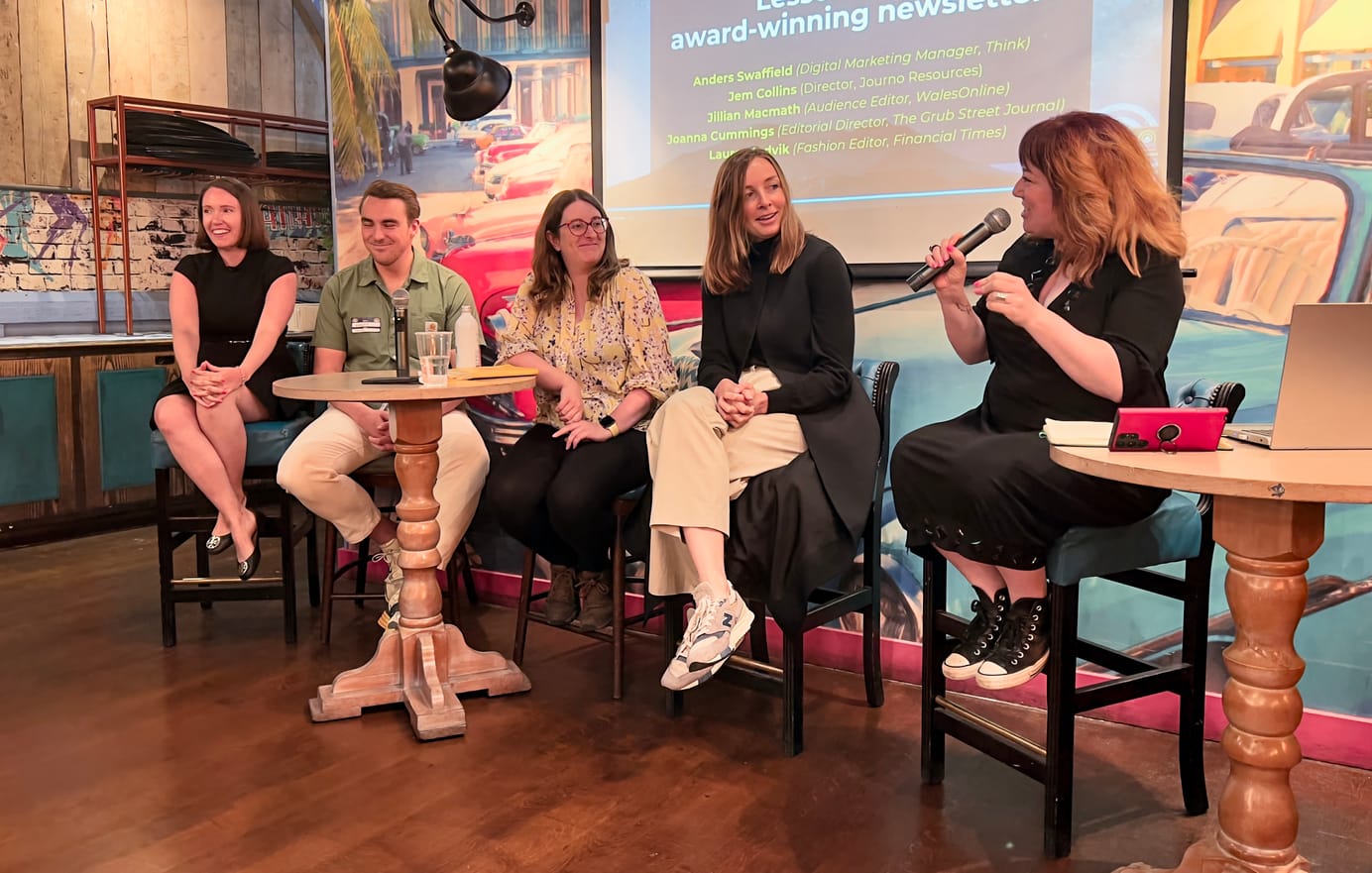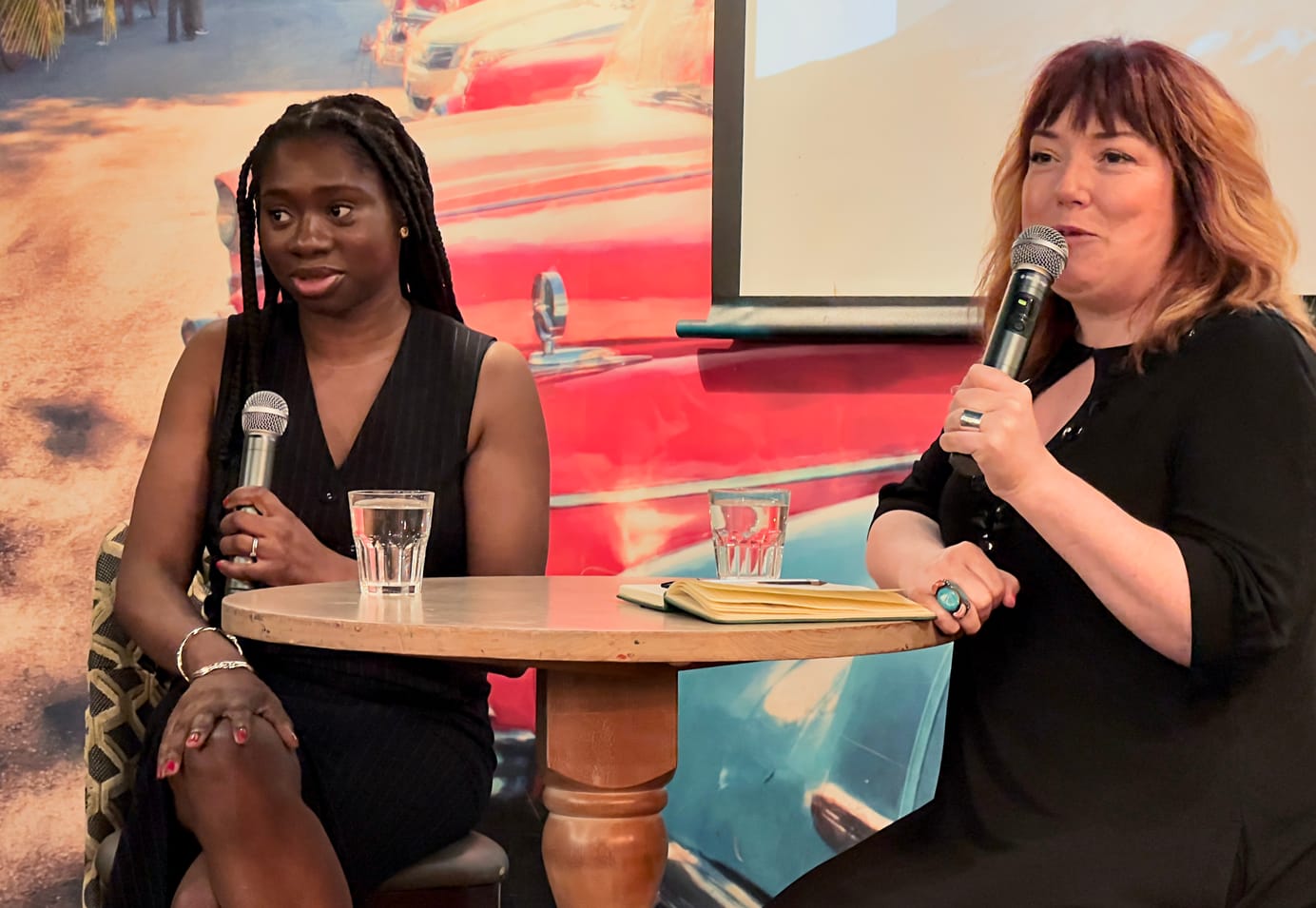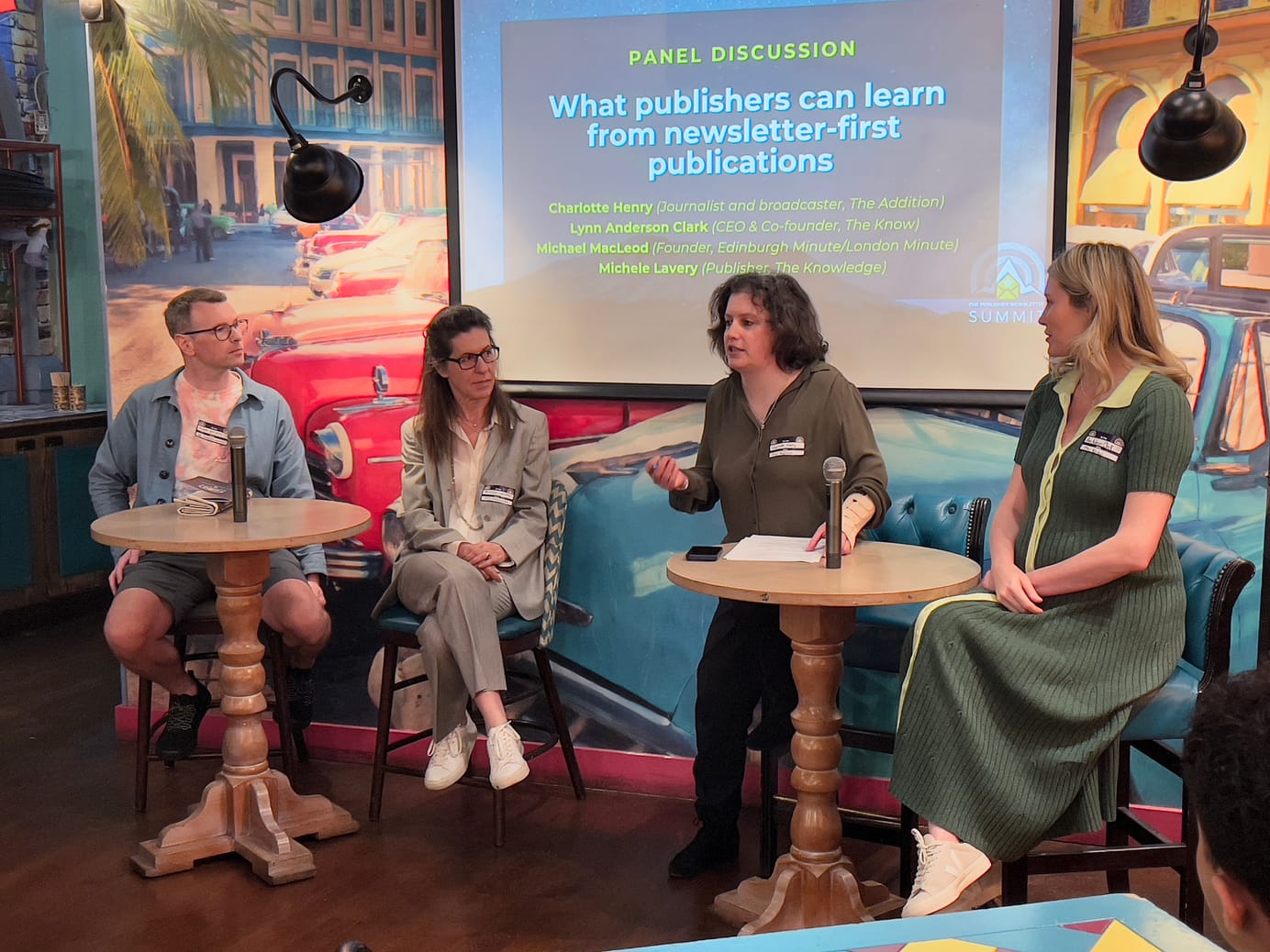
Lessons from Newsletter-First Publications
What can publishers learn about newsletter strategy from independent businesses that grew newsletter first? Notes from a panel discussion.
I’m spending much of the day at the Publisher Newsletter and Podcast Summit, from my friends at Media Voices. I ran a workshop on audience first newsletters earlier in the day, so I missed some early sessions. But I caught the whole of this panel, looking at lessons from a group of quite diverse independent publishers (even if two of them have very similar names…)
The Panel
- Michael MacLeod, Edinburgh Minute, London Minute
- Michele Lavery, The Knowledge
- Lynn Anderson Clark, The Know
- Chair: Charlotte Henry, The Addition
All three newsletters were founded to address specific problems in the news ecosystem, from the paucity of local news, to news overwhelm to news avoidance.
Word of mouth is the biggest referrer for Michael. He curates as much as he can every morning, in a really manual process. Algorithms are not always chronological, and end up with noisy feeds. Lynn pinpoints spotting a focused issue as the core success factor: educated women are avoiding the news because it’s not coming to them in the right way. That’s very different from a newsletter that is just “here’s the five things we published today” which is simply a marketing tool.
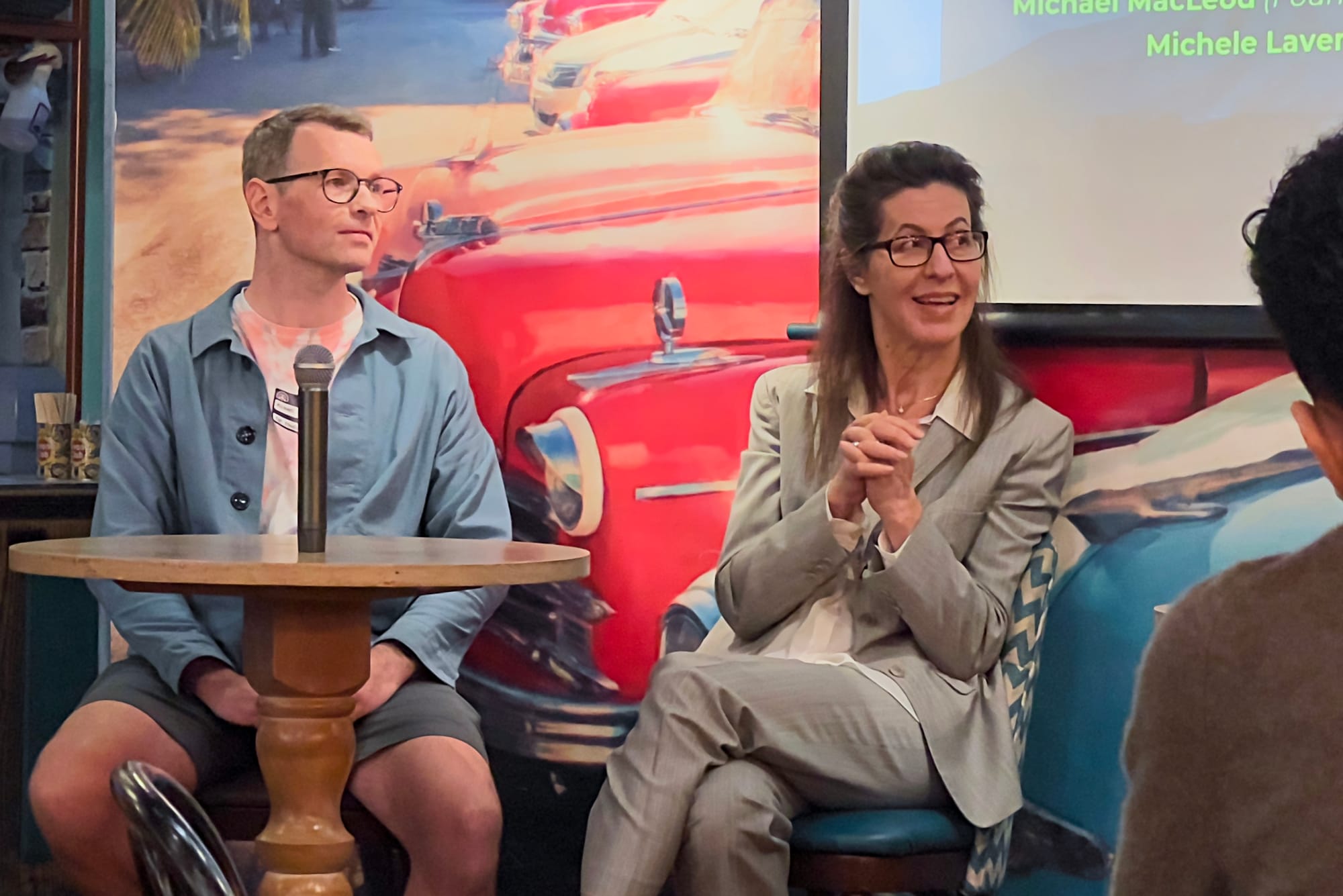
The Knowledge has backing from DMG, but is independent. They also see reader referral as the core growth machismo. But Michele also thinks that the emotional satisfaction of completion is also key. Sponsoring The Rest is Politics podcast early on was also a massive boost. This was early on, when it was cheaper — it led to 10,000s of signups. But it has slowed down now, and ads on podcasts aren’t working as well.
Michael contacts every single person, place, or organisation directly to let them know they’re mentioned. That’s a manual process of 15 to 20 contacts a day. He sees spikes when people share it on Reddit, but he’s more interested in steady growth by engaged people than one-off growth hacks.
Lynn has been partnering with like-minded brands — often lifestyle, sustainable ones. They have a voucher for referrals programs, for example. 120k followers on Instagram are her main shop window. But you would rather not be reliant on it for your business model. And they use social ads — especially on the ‘gram.
Biggest mistakes
Michele thinks they put up the paywall far too soon, before anyone really knew who they were. Being a weekly was too infrequent, and they weren’t building reader habit (they’re daily now). And they had tech issues, which they resolved by moving to Beehiiv.
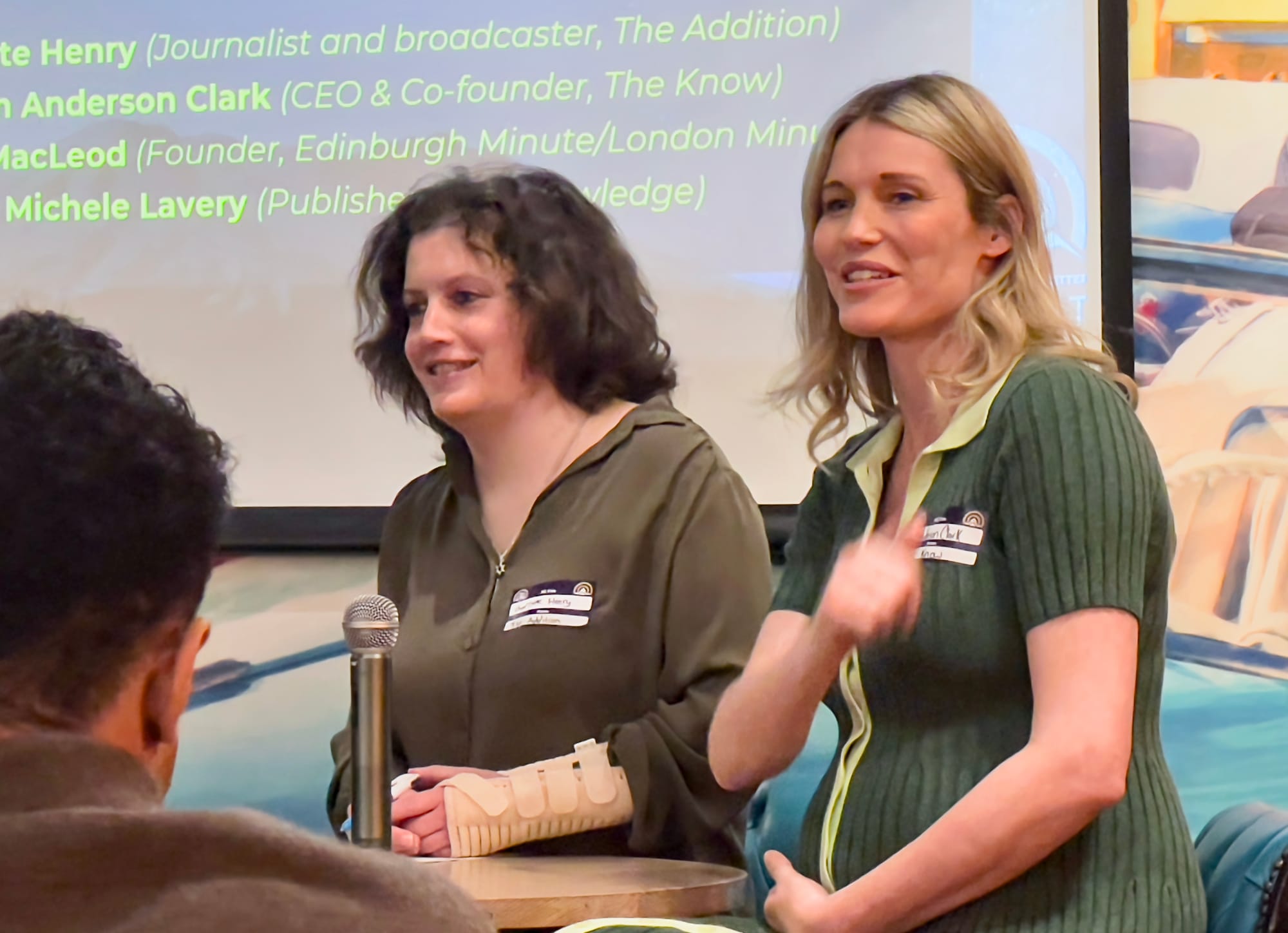
For Lynn, the mistake was working with influencers. While the idea made sense, they didn’t deliver results compared to the cost of working with them. “The lesson is trying a lot of things, but moving on quickly,” she said. “Be OK with letting it go, no matter how much work you’ve put into it.”
Michael’s mistake? Not even offering the option to pay from the start. He’s paid, but not paywalled. There’s one extra newsletter a week if you pay — but everything else is free. Most people are paying to keep the newsletter in existence, rather than for the specific benefit. He sees himself as helping them avoid the ads, so isn’t planning on heading down that path.
Michele is still running a free newsletter, with ads. There are plenty of possibilities for paid offerings — but she’s terrified of a paywall. You might do well with your existing audience — but do you cut off growing your audience?
Lynn’s working with a hybrid model, but with the majority of the money coming from advertising. Coming into someone’s inbox is actually quite personal.
“I’m so intentional about how we do it. It’s not a banner ad,” she says. “You need to be really intentional about the advertisers you start with to get your audience to warm to the model.”
They also have a Guardian-style donation model.
Which newsletter analytics matter?
Michele still pays attention to open rates, even post-Apple. Tracking the number of people who open in the first hour is something they’d be interested in paying more attention to — but they’re not a “rush to open” newsletter. They do look at subscriber growth and churn. Political comment tends to drive a lot of opt-outs. People are less tolerant of conflicting opinions.
Lynn pays attention to click-through rates as much as open rates — and it’s good for advertisers, too. Referral figures matter, too. She tracks how much new subscribers refer the newsletter to friends, compared to existing subscribers.
Michael tracks how many visitors his readers send to local publications, as well as subscription renewals.
Can a newsletter be too niche?
Edinburgh is 500,000 people and Michael doesn’t have all of them yet. Neighbourhood versions might work as a promotion, but wouldn’t work as a business.
“The beauty of a newsletter is that you don’t have to start big,” Lynn says. “A newsletter just needs a good journalist and good software. You can start with a niche. What’s your goal? Are you building a community to sell? It doesn’t have to be daunting.”
“We’re not that niche,” says Michele. “Our niche is bringing all the content out there down to just a newsletter.”
Audience Q&A
How many staff members do you have? And do you use AI?
- The Know: four people. They don’t use AI. They’ve played around it, but it’s not up to it yet.
- The Knowledge: Three editorial, and four business staff. Doesn’t use AI at all. The curation is manual, and it’s all in the attitude and the language.
- Edinburgh Minute: Sells the newsletter on the fact that it isn’t AI. 500 people have sent him links in the past six months.
How much does design matter?
Generally, the panel thinks design is important — it’s a consistent point of positive feedback. It’s about taking away the noise, suggests Lynn. The homepages of most publishers are so cluttered now.
Do you A/B test things?
The Knowledge used to A/B test subject lines, but it never showed a lot of variation. The Know does focus groups, but does A/B test as well. Michele uses click-through rates as a test of interest. How quirky can he go? How hyperlocal can he go?
Sign up for e-mail updates
Join the newsletter to receive the latest posts in your inbox.


